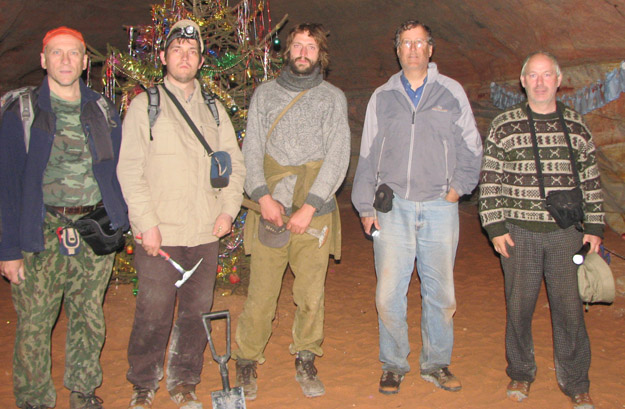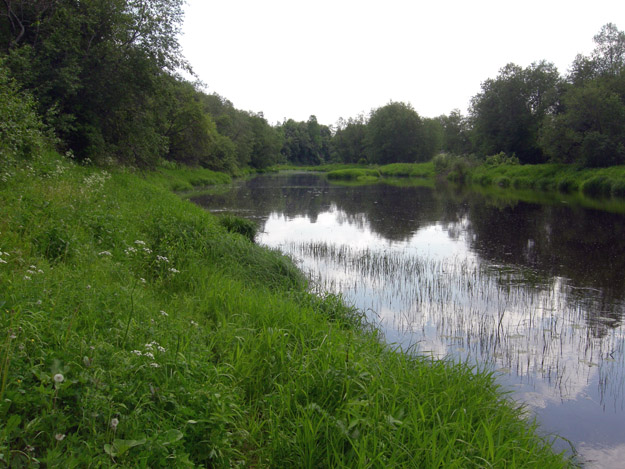I was very impressed by the Ordovician rocks I saw in the Leningrad Region on this past trip. I had seen parts of the Ordovician System in Estonia nearby, but not to this extent nor this particular facies. My model for Ordovician rocks had been based too strictly on those I’ve worked with in North America. Now I realize that the environmental conditions and faunas were significantly different on the ancient continent of Baltica — enough to produce unexpected trace fossils, especially on and in the hardgrounds. My perspective was changed, and thus the kinds of questions my students and I will be addressing in the next few years.

Nikolai, Sergei, Andrei, me, and my host Andrey in the Sablino Mines. I really don't know why there was a decorated Christmas tree in this cavern.
My Russian host, Andrey Dronov, was extremely generous and patient, freely sharing with me his scientific thoughts and his passion for Russian history and culture. I could not have asked for better. Remarkably, I met him for the first time on this expedition. My other Russian colleagues were great fun, and they also taught me much about Russia and its geology.
I learned that field geology in Russia is difficult and certainly could not be done without a knowledgeable Russian host. Every outcrop was farther, muddier, steeper and more overgrown than I expected. In fact, we looked at outcrops American geologists would have given up on years ago. If the rocks were there, we found them by hacking through the vegetation and digging them out with shovels.

Do you see the outcrops of limestone along these banks of the Lynna River? Neither do I. They are there, though, and Andrey and I found them with an epic jungle journey on our last field day.
The major catch to doing Independent Study work in Russia for a student is that we could not take specimens back to Wooster. We could, though, work in the geological lab facilities at the Academy of Sciences in Moscow, collecting enough data and images to keep a student busy for a year back home. I would look forward to showing a student these unusual rocks and fossils, and I now know how better to prepare for work in Russia!



Pingback: Wooster Geologists » Blog Archive » Geological fieldwork in the Deep South
Pingback: Wooster Geologists » Blog Archive » Wooster’s Fossil of the Week: A strange little echinoderm (Ordovician of Russia)